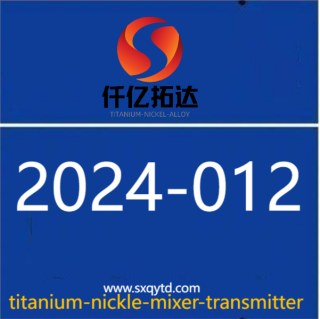Nickel pipe cap installation and maintenance guide
[ 信息发布:本站 | 时间:2024-03-14 | 浏览:495 ]
Nickel pipe cap installation and maintenance guide

Installation and maintenance guidelines for nickel pipe caps are essential to ensure their proper functioning and longevity within a piping system. Here's a comprehensive guide:
Installation:
-
Preparation: Ensure that the pipe ends are clean, dry, and free from any debris or contaminants that could compromise the integrity of the caps.
-
Inspection: Before installation, inspect the nickel pipe caps for any damage, defects, or irregularities. Replace any caps that do not meet quality standards.
-
Proper Alignment: Ensure that the pipe caps are aligned correctly with the pipe ends. Misalignment can lead to leaks or stress concentration points, affecting the overall integrity of the system.
-
Attachment: Use appropriate methods to attach the pipe caps securely to the pipe ends. Depending on the application, this may involve welding, threading, or using mechanical fasteners.
-
Sealing: Ensure that the pipe caps provide a tight seal to prevent leaks. Use appropriate sealing materials or techniques as recommended by the manufacturer.
-
Pressure Testing: After installation, perform pressure testing to verify the integrity of the pipe caps and seals. This helps identify any potential leaks or issues that need to be addressed before putting the system into operation.
Maintenance:
-
Regular Inspection: Periodically inspect the nickel pipe caps for signs of corrosion, damage, or wear. Pay particular attention to areas where the caps come into contact with the environment or other components.
-
Cleaning: Keep the pipe caps clean and free from debris or contaminants that could promote corrosion or damage. Use appropriate cleaning agents and methods as recommended by the manufacturer.
-
Corrosion Protection: Consider applying corrosion-resistant coatings or treatments to the pipe caps, especially if they are exposed to corrosive environments or harsh chemicals.
-
Tightening: Check the tightness of any mechanical fasteners or connections periodically and tighten them if necessary to prevent leaks or loosening over time.
-
Temperature Monitoring: Monitor the operating temperature of the pipe caps regularly, especially in high-temperature applications. Ensure that the caps are rated for the maximum temperature encountered in the system.
-
Repair or Replacement: If any pipe caps are found to be damaged or compromised during inspection, repair or replace them promptly to prevent further issues or failures.
By following these installation and maintenance guidelines, you can ensure the reliable performance and longevity of nickel pipe caps in your piping system. Regular inspection, proper maintenance, and timely repairs are essential for maximizing the lifespan of the caps and maintaining the integrity of the overall system
Shaanxi Qianyi Tuoda Technology Co., Ltd;
Email:qy002@sxqytd.com;WhatsApp +8618829679311
ASTM B161 | ASTM B162 | ASTM B163 | ASTM B164 | ASTM B165 | ASTM B166 | ASTM B168 | ASTM B407 | ASTM B408 | ASTM B423 | ASTM B424 | ASTM B425 | ASTM B434 | ASTM B435 | ASTM B443
INCONEL600|INCONEL601|INCONEL625|INCONEL718|INCONELX-750|INCOLOY A-286|NIMONIC 75|NIMONIC 80A|NICKEL 200|NICKEL 201|MONEL 400|MONEL K-500|INCONEL 690|INCOLOY 800|INCOLOY 800H|INCOLOY 800HT|INCOLOY 825|HASTELLOY C-276|
